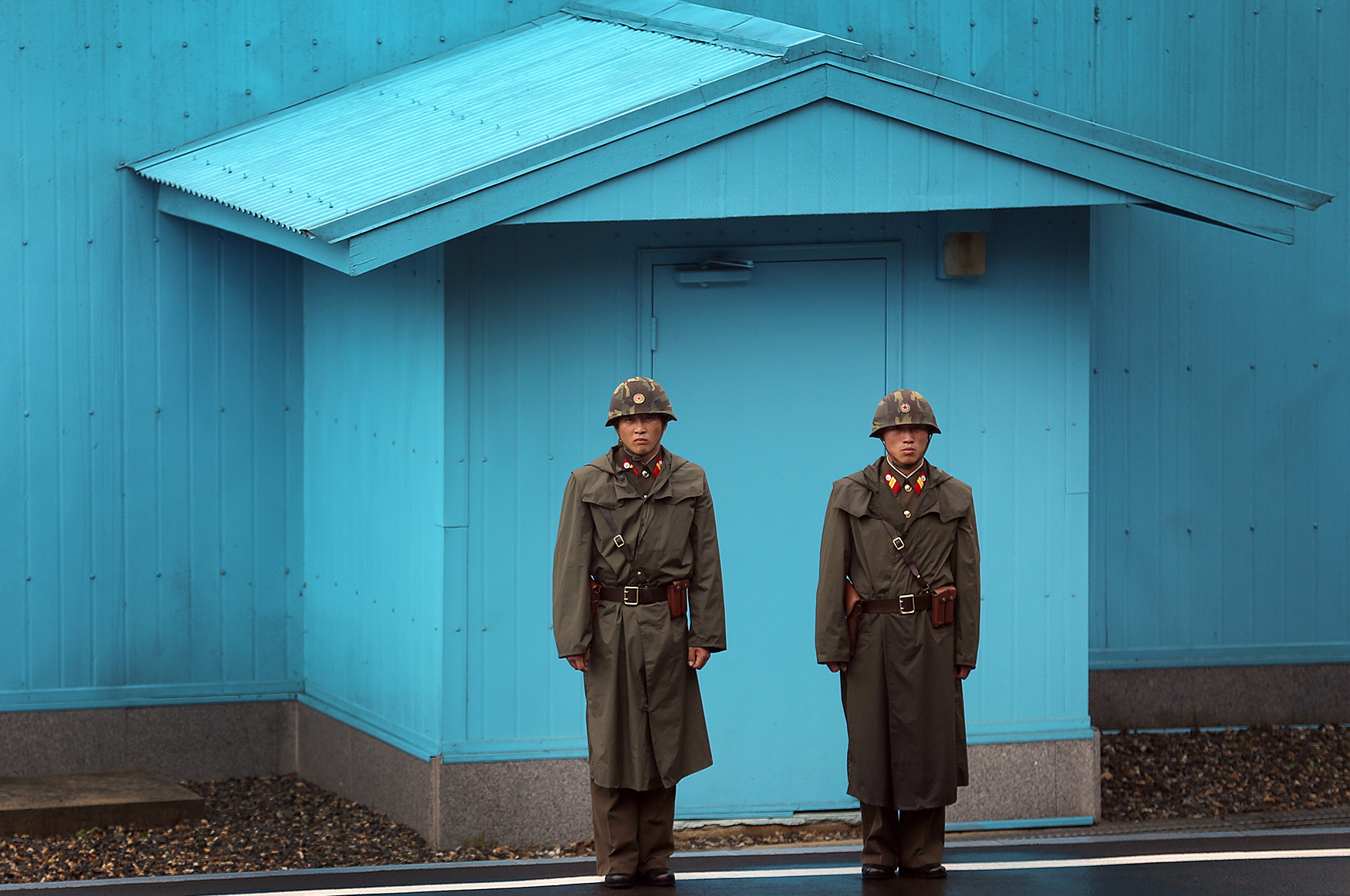North Korea: New economy

Grassroots barter and trade that began as a necessity in the famine years of the 1990s has grown into a quasi-legal market system that is now one of the most important drivers of North Korea’s domestic economy. For those who know how to navigate it, called the “money masters”, there are riches to be had.

North Korean school children play in the aquatic center at the Songdowon International Children's Camp in Wonsan, North Korea, on June 23, 2016. The camp, which has been operating for about 30 years, was intended mainly to deepen relations with friendly countries in the Communist or non-aligned world. (AP Photo/Wong Maye-E)

A man uses his smartphone in front of portraits of the late North Korean leaders Kim Il Sung, left, and Kim Jong Il in Pyongyang, North Korea, on May 5, 2015. North Koreans have gained greater access to media and devices like cellphones during Kim Jong Un's rule. (AP Photo/Wong Maye-E)

People watch a 3D movie on an amusement park ride at the Rungna People's Pleasure Park in Pyongyang, North Korea, on Sept. 22, 2013. (AP Photo/David Guttenfelder)

A family visits a flower festival during a celebration to mark the 105th anniversary of the birth of the late leader Kim Il Sung on April 16, 2017, in Pyongyang, North Korea. (AP Photo/Wong Maye-E)

A boy stands in the aisle at the Potonggang department store in Pyongyang, North Korea, on June 19, 2017. (AP Photo/Wong Maye-E)

A woman looks at a display of imported cosmetics and perfume on the second level of the upscale Potonggang department store in Pyongyang, North Korea. Three generations into the ruling dynasty founded by Kim Il Sung, markets have blossomed and a consumer culture is taking root. (AP Photo/Wong Maye-E)

A poster showing different types of men's hair styles hangs outside a barber shop at the Munsu water park in Pyongyang, North Korea, on Dec. 1, 2015. (AP Photo/Wong Maye-E)

A man takes a photograph while his friends rest on deck chairs at a water slide and swimming pool complex in Pyongyang, North Korea, on Sept. 8, 2012. (AP Photo/David Guttenfelder)

A man and woman ski at the Masik Pass ski resort, nestled deep in North Korea's eastern mountains, on Feb. 22, 2014. The resort has 10 ski runs, from beginning to advanced, a well-equipped rental shop, and a 250-room, eight-story hotel for foreigners alongside a 150-room hotel for Koreans. (AP Photo/Vincent Yu)

Children attend a ski class at the Masik Pass Ski Resort in Wonsan, North Korea, on Feb. 20, 2016. (AP Photo/Wong Maye-E)

People dressed in their swim suits play volleyball at the Munsu water park in Pyongyang, North Korea, on Dec. 1, 2015. The water park is open to both tourists and locals living in the North Korean capital. (AP Photo/Wong Maye-E)

A young girl stands on floral-print carpet inside the Pyongyang Children's Palace in Pyongyang, North Korea, on April 14, 2011. The large facility teaches performance arts, fine arts, and sports as extracurricular classes to students in Pyongyang. (AP Photo/David Guttenfelder)

Dresses are displayed on mannequins at a hotel gift shop in Pyongyang, North Korea, on Feb. 27, 2008. (AP Photo/David Guttenfelder)

A woman in a traditional dress leaves the Pyongyang Indoor Stadium after attending a mass dance party celebrating the "Day of the Shining Star," or birthday of late North Korean leader Kim Jong Il, on Feb. 16, 2016, in Pyongyang, North Korea. (AP Photo/Wong Maye-E)
North Korea Galleries
The headlines are all about nuclear weapons and ballistic missile launches. But on the ground in North Korea, scenes of daily life attest to both the poignancy and resilience of a people struggling to succeed.
Along with its famous mass games, North Korea has taken the tradition of the military parade to a level all of its own. Its parades are used to show off the best and newest weapons in its arsenal and the almost-unhuman precision of its goose-stepping troops.
As the heroes of socialist propaganda, they are depicted as a self-sacrificing, proud proletariat upon whom the weight of the nation is said to depend. But the life of the worker in North Korea has never been easy.
In the totalitarian world of Kim Jong Un’s North Korea, everything begins from the center of Kim Il Sung Square, Pyongyang’s physical and spiritual center. And every neighborhood, it seems, has some sort of a statue or monument in honor of the Kim’s and the nation their created.
Grassroots barter and trade that began as a necessity in the famine years of the 1990s has grown into a quasi-legal market system that is now one of the most important drivers of North Korea’s domestic economy. For those who know how to navigate it, called the “money masters”, there are riches to be had.
For more than 60 years, the artificial dividing line between the two Koreas has separated families and stood as a testament to hostilities that have seemed to have no end. The Demilitarized Zone, despite its name, remains the world’s most heavily fortified border.
Visual artist and Journalist






Kim Jong Un is the third generation of North Korea’s ruling Kim family, the first and now only hereditary socialist dynasty. But while still in his early thirties, he appears to be as deft with wielding power as his grandfather, “eternal president” Kim Il Sung, and father, “Dear Leader” Kim Jong Il.